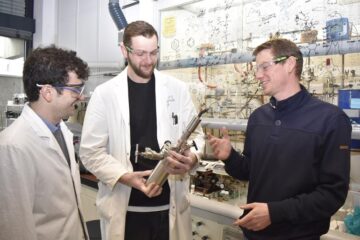Tunnels concentrate air pollution by up to 1000 times

The study, which has been published in Atmospheric Environment, measured ultrafine particle concentration levels outside a vehicle travelling through the M5 East tunnel in Sydney.
Study co-author and director of Queensland University of Technology's International Laboratory for Air Quality and Health, Professor Lidia Morawska, said road tunnels were locations where maximum exposure to dangerous ultrafine particles in addition to other pollutants occurred.
“The human health effects of exposure to ultrafine particles produced by fuel combustion are generally regarded as detrimental,” Professor Morawska said.
“Effects can range from minor respiratory problems in healthy people, to acute myocardial infarction (heart attack) in people with existing heart complaints.
Professor Morawska said the study involved more than 300 trips through the four kilometres of the M5 East tunnel, with journeys lasting up to 26 minutes, depending on traffic congestion.
“What this study aimed to do was identify the concentration levels found in the tunnel. It generated a huge body of data on the concentrations and the results show that, at times, the levels are up to 1000 times higher than in urban ambient conditions,” she said.
She said drivers and occupants of new vehicles which had their windows closed were safer than people travelling in older vehicles.
“People who are driving older vehicles which are inferior in terms of tightness and also those riding motorcycles or driving convertibles, these people are exposed to incredibly high concentrations,” she said.
“When compared with similar studies reported previously, the measurements here were among the highest recorded concentrations,” she said.
Professor Morawska said tunnels were becoming an increasingly necessary infrastructure component in many cities across the world.
“When governments are building tunnels for urban design reasons, they should also consider the impact these tunnels are having on the environment and to people's health,” she said.
“The study highlights why governments need to consider how they are going to deal with the air pollution levels inside the tunnel and removal of ultrafine particles in the outside environment.”
The study was conducted jointly by Professor Richard de Dear and his doctoral candidate, Mr Luke Knibbs from Macquarie University, in collaboration with Professor Morawska and Dr Kerrie Mengersen from QUT.
Media contact – Rachael Wilson, QUT media officer on 3138 1150 or rachael.wilson@qut.edu.au
Media Contact
More Information:
http://www.qut.edu.auAll latest news from the category: Ecology, The Environment and Conservation
This complex theme deals primarily with interactions between organisms and the environmental factors that impact them, but to a greater extent between individual inanimate environmental factors.
innovations-report offers informative reports and articles on topics such as climate protection, landscape conservation, ecological systems, wildlife and nature parks and ecosystem efficiency and balance.
Newest articles

Lower dose of mpox vaccine is safe
… and generates six-week antibody response equivalent to standard regimen. Study highlights need for defined markers of mpox immunity to inform public health use. A dose-sparing intradermal mpox vaccination regimen…

Efficient, sustainable and cost-effective hybrid energy storage system for modern power grids
EU project HyFlow: Over three years of research, the consortium of the EU project HyFlow has successfully developed a highly efficient, sustainable, and cost-effective hybrid energy storage system (HESS) that…

Safer alternative for an explosive reaction
The chemical industry has been using a reaction with explosive chemicals for over 100 years – now Mülheim scientists have discovered a safer alternative. The Ritter Group of the Max…





















